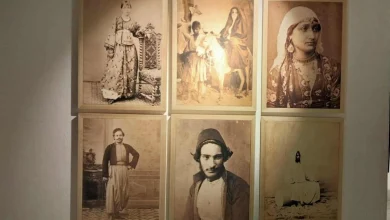
The timeless journey of Carmen: global quotations and cultural reinterpretations (1-4)
Origins, roots, and early operas
The story originated in France in the 19th century, first as a short story by Prosper Mérimée, and shortly thereafter as a groundbreaking opera by Georges Bizet. The story of the free-spirited gypsy woman and the soldier who is consumed by his passion for her transcended its original context to become a universal tale with multiple cultural dimensions.
Carmen’s story, steeped in themes of love, freedom, fate, exoticism, gender dynamics, and social marginalization, has proven remarkably adaptable and open to different interpretations, having been reinterpreted across a variety of media, genres, and cultural backgrounds for more than 150 years. Its ability to excite and fascinate remains intact, making it a subject ripe for cultural crossover and appropriation.
***
The basic story, whether derived from Mérimée’s harsh realism or Bizet’s operatic passion, revolves around powerful and often conflicting themes. The overwhelming power of love, often manifested in the form of destructive obsession and jealousy, drives the tragedy towards its inevitability. Carmen herself embodies a radical concept of freedom, often disturbing, particularly her independence as a woman, which clashes with societal expectations and the male desire for control and possession.
This conflict unfolds under the shadow of fate or determinism, a sense of predestination suggested by the premises and Carmen’s own fatalism, which challenges notions of free will. The narrative is closely linked to exoticism—the appeal, charm, and inherent racism directed toward “the other,” which is embodied specifically in Carmen’s gypsy identity and the Spanish setting, which often reflects the cultural biases of its creators and audience.
Furthermore, the story inherently questions traditional gender roles and reveals power imbalances rooted in social class and race, placing marginalized characters in confrontation with the established authority.
***
This article (in four parts) aims to trace the history of Carmen’s global performance, going beyond the original sources to analyze influential and innovative adaptations across theater and screen.
By examining major opera productions, film adaptations ranging from silent cinema to contemporary reimaginings, and theatrical adaptations including ballet and musical theater, this analysis seeks to understand how Carmen’s narrative and surrounding themes have been reinterpreted.
Viewed through the lens of appropriation theory, these reinterpretations reveal the inherent flexibility of the story as well as how it functions as a mirror reflecting changing cultural values, artistic styles, and societal concerns over time. We will address theoretical concepts such as appropriation as a process of interpretation and creation, cultural transfer and transit, the palimpsestuous nature of appropriation, and the critical reevaluation of fidelity and loyalty to the original text, providing a framework for understanding Carmen’s timeless journey.

Origins: The novel by Mérimée and the opera by Bizet
Carmen, as she is widely known today, originated in two outstanding but interrelated French works of the 19th century: Prosper Mérimée’s short novel (1845) and Georges Bizet’s opera (1875). An examination of these founding texts reveals the basic narrative elements and thematic concerns that fueled subsequent adaptations, as well as the significant transformations that occurred in the story’s transition from prose to opera.
Carmen Prosper Mérimée (1845)
Prosper Mérimée’s novel Carmen offers a stark and often brutal narrative, framed by the account of a French scholar traveling through Andalusia in Spain. This structure blends genres, incorporating elements of travel literature and adventure stories into the central romantic tragedy. The narrator first meets the thief Don José Navarro, forming a brief bond before later finding him imprisoned and awaiting execution. The bulk of the story unfolds as Don José recounts his fatal relationship with the gypsy woman, Carmen, to the narrator. Miréme’s framed narrative structure allows her to create a sense of distance, stripping away the emotional and violent excesses of the underlying story through the lens of an educated and detached observer. However, the narrator’s own interactions and fascination with both José and Carmen complicate this detachment, skillfully drawing the reader into the morally ambiguous world of the story.
The subsequent addition of a fourth chapter, a quasi-scientific discourse on Gypsy culture, language, and physical characteristics, further complicates the novel’s tone, reinforcing the narrator’s (and perhaps Miró’s) ethnographic interest while simultaneously documenting the racial prejudices of the era.
The structure of the novel, with the narrator’s shifting role from detached observer to involved participant and the shocking inclusion of the final ethnographic chapter, creates a complex ambiguity. It reflects a tension between romantic fascination with the exotic “other” and a more objective and prejudiced view, setting a precedent for the complex ways in which subsequent adaptations would deal with the original story’s exoticism and its problematic representations.
***
Miriam’s descriptions are characterized by frankness and boldness. Carmen is portrayed as the archetypal femme fatale, a beautiful, fiercely independent and cunning gypsy woman associated with smuggling, seduction and mysterious knowledge.
She uses her linguistic skills (she speaks Basque, Romani, and Spanish) and her charm to maneuver and control situations, first convincing Don José to let her escape arrest and later luring him into a life of crime. Her freedom is paramount; she ultimately chooses death over submitting to José’s possessive demands.
Don José, on the other hand, is a Basque nobleman turned soldier, then fugitive and murderer, driven by overwhelming passion and deadly jealousy. His story represents a fall from grace, a descent from honor to crime and violence, largely framed as a result of his involvement with Carmen. His final words blame the gypsy culture for Carmen’s nature, reflecting the racial prejudice prevalent in the novel.
The destructive power of passion dominates the overall scene of the novel, followed by the allure and danger of exoticism and stark power imbalances. Mirimé deals openly with the widespread European fascination with 19th-century Spain and gypsy culture, but he does so through a clouded lens thanks to racist stereotypes and inaccuracies. Carmen’s gypsy identity is central to the perception of the other and is linked to supposed traits of cunning, promiscuity, and unbridled freedom. The narrative also depicts domestic violence, culminating in José’s murder of Carmen, presented within a framework that suggests, through the opening Greek inscription “All women are once like bitterness. But she has two good moments: one in bed and the other in the coffin,” from a deeply misogynistic perspective. However, despite this framing and the author’s clear biases, Carmen’s fierce independence and rejection of possession have allowed her to be interpreted as an early feminist icon.
Carmen by Georges Bizet (1875)
Georges Bizet’s opera, with a libretto by Henri Meilhac and Ludovic Halévy, adapted Mérimée’s short novel for the musical theater, transforming the narrative and its focus.
While the opera drew heavily on the basic relationship and plot points of the third part of the novel, it simplified the story, most notably by omitting Mérimée’s framing narrator. This shift placed Carmen firmly at the center of the drama. Major changes included the creation of the character of Micaela, Don José’s virtuous peasant sweetheart, who acts as Carmen’s dramatic and symbolic conscience, representing the innocence, duty, and stable life that José has abandoned. The picador Lucas was promoted to the charismatic bullfighter Escamillo, ensuring a more attractive rival for Carmen’s affections.
The creators of the work softened Don José’s character at the beginning, portraying him as a naive soldier tragically destroyed by passion rather than the hardened criminal of the later parts of the novel. These changes, along with the simplification of the narrative for the opera stage, also shifted the thematic focus, emphasizing the romantic triangle and the clash between Carmen’s desire for freedom and José’s possessiveness.
***
Puccini’s music was revolutionary, bridging the gap between the lighter French opéra comique tradition and the emerging Italian verismo realism.
He masterfully integrated Spanish and gypsy musical expressions—most famously in Carmen’s “Habanera” (“Love is a rebellious bird”) and “Seguidilla,” and the dances in the second act—creating a lively and exotic atmosphere that became closely associated with the opera’s identity. Bizet used leitmotifs, such as the famous “Fate leitmotif,” to emphasize the opera’s dramatic trajectory toward tragedy.
The opera was originally performed with spoken dialogue, a feature of opéra comique, but after Bizet’s death, his friend Ernest Guiraud composed recitatives to replace the spoken text for performances outside France, particularly in Vienna, creating a form of opera that became standard for many years. This alteration changed the tempo and character of the work, and the debate over the use of dialogue versus recitatives continues in modern productions.
***
The premiere of Carmen at the Opéra-Comique in Paris on March 3, 1875, was highly controversial.
The Parisian public and critics, accustomed to the lighter works usually presented at the Opéra-Comique, were shocked by what they considered the vulgarity of Carmen, its realistic portrayal of working-class life, smuggling, lawlessness, and especially the violent murder of the heroine on stage. Carmen herself, portrayed by Célestine Galli-Marié as a defiant and immoral seductress (“the embodiment of vice,” according to one critic), exceeded the expectations of opera heroines.
Conservative critics criticized the music, describing it as “boring and obscure” or overly complex (“Wagnerian”) (“Wagnerian”), and found it lacking the charm of traditional comic opera composers. A few critics, such as Théodore de Banville, praised its realism. The opera initially failed to win widespread public enthusiasm in Paris and was often performed to half-empty houses. Tragically, Bizet died just three months after the premiere, believing his masterpiece to be a failure.
***
However, the shock and initial failure in Paris paradoxically paved the way for Carmen’s eventual worldwide success. The very elements that shocked the Parisian establishment—its gritty realism, its defiant heroine, its passionate music, its tragic scale—proved extremely appealing to audiences worldwide.
Performances quickly followed after Vienna and Bizet’s death (using a revised score), in Brussels, London, and New York, and were highly successful.
The controversy surrounding its premiere probably aroused curiosity, while the opera’s themes and musical innovations resonated with the flourishing verismo movement in Italy and broader European artistic trends. The international success cemented Carmen’s status and showed how works of art that challenge conventions within their original context can find acceptance and ultimately reshape artistic norms elsewhere. The initial fall became an integral part of Carmen’s story, contributing to its mystery and enduring power.
Establishing the Icon: Early Opera Interpretations (Late 19th/Early 20th Century)
After its controversial premiere in Paris and Bizet’s sudden death, Carmen quickly conquered opera houses around the world, establishing itself as a cornerstone of operatic history by the end of the 19th century. Its journey from scandalous Parisian flop to global phenomenon was shaped by its early international performances and the interpretations of the star singers who embodied its heroine.
The opera’s international spread began almost immediately after Bizet’s death. Vienna saw a successful production in October 1875, using Ernest Guiraud’s revision and replacing the original spoken dialogue, a format that would become common outside France. Successes followed in Brussels (1876), London (1878), St Petersburg, New York (1879), Naples, and various German cities. These early performances often included translations (initially mostly into Italian) and adaptations such as recitative jer or the addition of ballet sequences (as in Vienna) to suit local tastes and customs, demonstrating the work’s adaptability from the outset.

Playing Carmen quickly became a rite of passage for aspiring singers. These singers were not mere vocal interpreters; their physical presence, acting choices, and public personas shaped their perception and understanding of Carmen, the character and the opera. This is consistent with theories of appropriation that recognize performers as crucial interpretive and creative agents. Two early cases stand out for their powerful influence:
Minnie Hauk (1851-1929)
American soprano Minnie Hauk played a pivotal role in establishing Carmen in the English-speaking world. Her debut in the role at Her Majesty’s Theatre in London in 1878 was a sensation. Critics hailed her performance as “brilliant” and a departure from traditional opera heroines, praising her “audacity, impetuosity, and freedom.”
Her interpretation was seen as embodying “Carmen’s ruthless sensuality, capriciousness, cruelty, and fatalistic defiance,” even if her voice itself was not considered exceptional in its sweetness. Hook’s portrayal emphasized Carmen’s individuality and challenged Victorian expectations of female characters on stage.
Her success in London and later in New York (where her interpretation was considered superior to Zelia Trebelli’s in the 1884 premiere at the Metropolitan) cemented Carmen’s place in operatic history and highlighted the importance of dramatic interpretation alongside vocal virtuosity. Carmen, as presented by Hawke, was a major factor in transforming the opera from a French controversy into an international success.
Emma Calvé (1858-1942)
French soprano Emma Calvé was perhaps the most famous Carmen of the late 19th and early 20th centuries, renowned for the dramatic realism and intensity she brought to the role. Influenced by the naturalistic acting style of Eleonora Duse, Calvé researched how to portray the character meticulously, studying gypsy women in Spain and altering her costume for greater authenticity. Her performances attracted attention for their raw emotional realism.
She initially impressed critics such as George Bernard Shaw, although he later felt that she sacrificed the music for dramatic effect and became “incapable of paying the slightest attention to the musical score.” Calvi’s interpretation reinforced Carmen’s image as a complex and strongly physical character, requiring powerful acting skills and leaning more towards the verismo style. Her success demonstrated how an interpreter’s choices and commitment to realism can profoundly shape the audience’s understanding of a classical work.
The influence of these early singers confirms that the history of Carmen’s performance is inseparable from the history of its performers. Their images became influential “texts” in their own right, adding layers to the Carmen myth and demonstrating that quotation is an ongoing process that is realized through performance.
***
Critical views of the opera continued to evolve alongside its performance history.
The initial shock and moral condemnation gradually faded, replaced by widespread recognition of its musical genius and dramatic power, and praise from figures such as Tchaikovsky and Nietzsche. However, debates about the opera’s representation of Spain, Gypsy culture, and gender roles continued.
Spanish critics sometimes objected to perceived inaccuracies in the portrayal of local customs, while discussions in multicultural contexts such as Prague included nationalist interpretations, viewing the opera through Czech or German cultural lenses. This operatic mix of exoticism, realism, and tragedy provided fertile ground for diverse critical readings, ensuring its continued relevance and interpretive potential.
Read also:
The city between reality and cinema





Hi, this is a comment.
To get started with moderating, editing, and deleting comments, please visit the Comments screen in the dashboard.